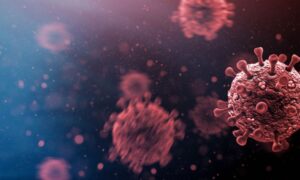
Keeping your building’s air clean and safe is more critical than ever. UV light disinfection is a proven technology that neutralizes harmful pathogens, but not all UV light is created equal. When it comes to disinfection, UVC light is the most effective type of UV for eliminating viruses, bacteria, and mold.
Farlite Solutions specializes in custom indoor UV air disinfection systems tailored to your building’s unique needs, no matter your industry. Learn more about how we can help you create a healthier and safer indoor environment.
The Disinfecting Power of UV Light
Ultraviolet (UV) light is a type of electromagnetic radiation with a wavelength shorter than visible light but longer than X-rays. It’s a natural component of sunlight, but it can also be generated artificially by specialized lamps. The germicidal power of UV light lies in its ability to disrupt the DNA of microorganisms like viruses, bacteria, and fungi.
Think of DNA as the instruction manual for a cell. When microorganisms are exposed to UV light, particularly UVC, their DNA absorbs this energy. This absorption damages the DNA’s structure, scrambling the “instructions” and preventing the microorganism from replicating or functioning properly. Essentially, the UV light neutralizes the threat of aerosolized viruses and bacteria by rendering these pathogens harmless.
Comparing UVA, UVB, and UVC Light
UVA (315-400 nanometers): This type has the longest wavelength and the lowest energy level within the UV spectrum. While UVA is responsible for that summer tan (and unfortunately, wrinkles), it has very limited germicidal properties. You’ll commonly find UVA used in tanning beds and black lights, but it’s not the right choice for effective disinfection.
UVB (280-315 nanometers): With a slightly shorter wavelength than UVA, UVB has some germicidal properties, but it’s primarily known for its role in sunburns and skin damage. While it can inactivate some microorganisms, its effectiveness is significantly lower than UVC, making it less suitable for widespread disinfection purposes.
UVC (100-280 nanometers): This is the superhero of the UV family when it comes to disinfection. UVC has the shortest wavelength and the highest energy level, making it incredibly effective at destroying the DNA of bacteria, viruses, and other pathogens. This is the type of UV light used in most disinfection devices, including the UVPhasor systems Farlite Solutions installs in buildings like yours. Direct exposure to UVC can be harmful to humans, so proper safety precautions and thoughtful design and engineering are crucial. Farlite’s UVPhasor has been scientifically and painstakingly engineered to not pose a threat to human health.
Continuous and Automated Air Disinfection Indoors
Our UVPhasor system can help effectively disinfect the air in your building. Unlike traditional disinfection methods, this ceiling-mounted device operates in the upper-air zone of a room, above the reach of occupants. This strategic placement ensures continuous air disinfection without any risk of UV exposure to people.
This system uses high-intensity UVC lamps to create a disinfection zone – a UV Barrier – in the upper portion of the room. As air naturally circulates, aerosolized airborne pathogens are drawn upwards and pass through this zone, where they are exposed to germicidal UVC light. Plus, it operates automatically and continuously, providing 24/7 air disinfection without disrupting your daily operations.
Safe and Effective UV Light Disinfection Systems for Buildings
Farlite Solutions designs custom UV disinfection systems tailored to your specific needs. Contact us today to learn more about how we can help you protect the health and safety of occupants in your building.
